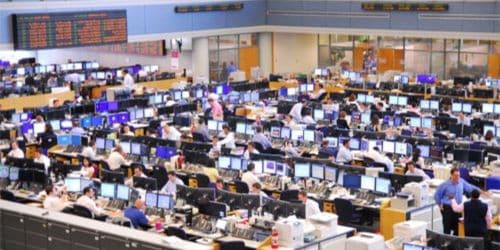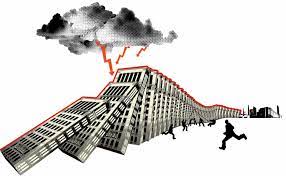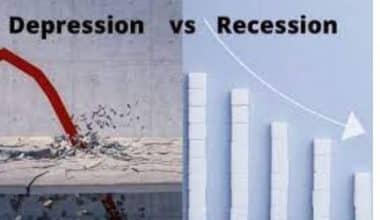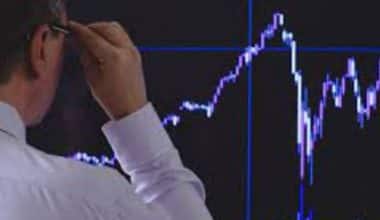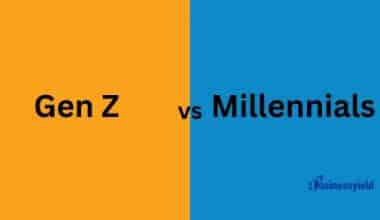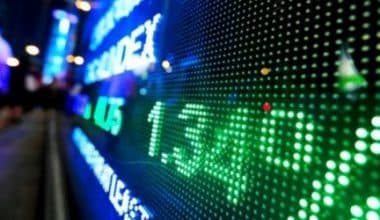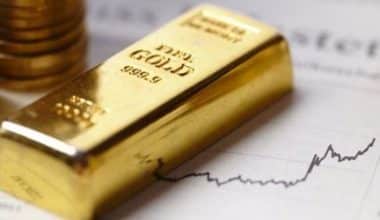Today, the market is entirely electronic. You generate digital order tickets and route them to an electronic exchange that automatically matches your orders with corresponding orders, or it sits on the digital order book waiting for another trader to route an order that satisfies it. It’s all so elegant and efficient, except for a few hiccups caused by high-frequency traders. But what about before everyone had computers? What was it like before? Floor traders were present. Let’s take a look at what floor traders do in the stock market, as well as Wall Street and the New York Stock Exchange.
What is a Floor Trader?
An exchange member who executes transactions solely for their account from the exchange’s floor is known as a floor trader. The open outcry method was once used by floor traders in the pit of a commodity or stock exchange; however, most of them now use electronic trading systems and do not appear in the pit.
By providing liquidity and reducing bid-ask spreads, floor traders play an important role in the commodity and stock markets. Floor traders are also known as individual liquidity providers and registered competitive traders.
Understanding the Floor Traders
floor traders are typically depicted as traders When a scene of a securities exchange is shown in a film. Because they are trading with their own money, these traders are frequently depicted as being emotionally invested in the trades they execute. In reality, most traders are not floor traders, and floor traders are becoming increasingly rare because the majority of traders who use their own money have switched to electronic trading, which does not take place in the pit.
Before trading on an exchange, a floor trader must go through a screening process. The National Futures Association requires floor trader applicants to submit the following documents: a completed Form 8-R online, fingerprint cards, proof of trading privileges from a contract market, and an $85. non-refundable application fee. Other exchanges have their screening requirements.
Floor Traders, Market Makers, and Brokers
In the pit, floor traders play distinct roles in addition to market makers and brokers. Brokers act on behalf of their clients, whereas market makers primarily provide liquidity. The primary motivation of floor traders, who also provide liquidity, is to make money with their own money. All parties, however, want the best order execution possible. A floor broker may be permitted to trade for their account in addition to the firm or client they represent, depending on the exchange’s rules. A person can be a floor broker and a floor trader in this situation.
New York Stock Exchange Floor Traders
American capitalism is symbolized by the storied New York Stock Exchange Floor Traders in Lower Manhattan. The trading floor’s floor brokers, specialists, and designated market makers (DMMs) are the face of Wall Street, appearing in photographs, newspapers, and financial television.
Despite their visibility, it’s difficult to tell what they’re doing down there. We asked a floor broker, who spoke only on the condition of anonymity, to describe his job and daily routine because we were curious.
#1. A floor broker executes orders for their clients. They do not execute on their accounts.
Simply put, according to our source, “floor traders are people who represent client orders at the point of sale on the New York Stock Exchange floor.” Almost all New York Stock Exchange floor traders trade on an “agency” basis, which means they do not trade for themselves or their firms.
#2. A floor broker provides information for their clients.
Banks, broker-dealers, hedge funds, mutual funds, pension funds, day traders, and even some high-net-worth individuals are among the clients of a floor broker. Our source explained, “We are the ‘eyes and ears’ for our clients’ stocks. We provide market color, inform them of market rumors, and locate liquidity from the other hundred or so floor brokerage shops.”
Each share traded by a floor broker results in a commission. According to the floor broker, this can range from half a penny to five cents per share.
#4. A floor broker’s workday begins a few hours before the opening bell.
At 9:30 a.m., the stock market opens. The closing bells sound at 4:00 p.m., but an NYSE floor broker starts his or her day much earlier. 7:30 a.m. is when a floor broker might arrive. or 8:00 a.m., according to our source.
Typically, a floor broker will read newspapers, scan the newswires, check their Bloomberg terminal, and possibly email stories/links to their customers at this time.
Common Misconceptions about New York Stock Exchange Traders
That’s what they do, here are some things they don’t do. First off, they don’t trade mortgage-backed securities on the NYSE floor.
#1. The NYSE floor has “old systems” and is “outdated.”
“That couldn’t be further from the truth,” our source clarified, “it’s not a question of floor vs. electronic trading. Almost all of our trading here is electronic, but with a human touch.”
For example, all of the brokers have handheld computers that are constantly updated with new releases, similar to mini iPads.
They also have access to any OMS, algo, or computer program, and some of the algos are only for floor brokers — ones that take parity and the open/close into account, according to our source.
#2. The NYSE floor isn’t like the rest of Wall Street (big banks and hedge funds). Several people on the NYSE floor didn’t even go to college.
“Unlike other places on Wall Street, the floor has a unique collection of employees,” the source said. “Unlike investment bankers, where almost everyone comes from an Ivy League school, a lot of the guys down here never even went to college, but worked at delis, auction houses, and other fast-paced environments.”
#3. Going to a top college isn’t as important on the field as having a strong work ethic.
It’s critical to be able to remember orders and instructions, as well as to have a strong work ethic. “We don’t care what college you went to, but if you’re good with numbers, you’ll be on time and won’t cry when someone yells at you.” “Those are more important than your GPA and college,” the source said.
How to Become a Floor Trader
According to the National Futures Association’s official website, the following are the important steps to take when registering as an FT:
- Designate as a security manager: Enroll as a security manager to gain secure access to the NFA’s Online Registration System (ORS).
- Complete online Form 8-R for furnishing the application and file it with the NFA according to the instructions.
- Submit fingerprints: Form 8-R must be accompanied by the applicant’s fingerprints on a National Futures Association fingerprint card.
- Proof of trading privileges: Contract markets and SEFs (swap execution facilities) must submit proof of trading privileges. Contract markets and SEFs may provide evidence in ORS after their applications have been filed.
- Payment: A non-refundable application fee of $85. If the trader is already registered with the CFTC (Commodity Futures Trading Commission) or is listed as a principal of a current CFTC registrant, the application fee is waived.
Floor Trader vs. Floor Broker
People can trade in the exchange market either personally or through a brokerage or member firm that employs floor brokers. Furthermore, investors with time constraints or other work commitments are unable to devote time to being present in the market or consistently monitoring it; as a result, they approach trading firms to execute their investments.
Let’s examine some of the distinctions between a floor broker and an FT:
- To begin, floor brokers act on their client’s behalf, whereas floor traders execute trades for their accounts.
- In contrast to floor brokers, who are also referred to as “pit brokers,” floor traders are also referred to as “registered competitive traders,” “individual liquidity providers,” or “locals.”
- To engage in floor trading, an entity that is already registered as a floor broker is not required to register as an FT.
- Firms typically hire floor brokers and pay them a commission, whereas FTs also work as floor brokers.
Floor Trading in the Future
Most exchange traders are not floor traders. Electronic trading has led to a decline in the number of floor traders. Because electronic trading is becoming more affordable and faster, most exchanges no longer use trading floors.
The open outcry trading method is still used by many exchanges, including the New York Stock Exchange Floor Traders (NYSE) in the United States. The open outcry process entails verbal communication as well as the use of hand gestures to transfer information about buy/sell orders.
Also, The open outcry method allows traders to communicate trades with people on the trading floor and gain a better understanding of demand and supply for securities than trading electronically.
The future of floor trading, however, remains uncertain as a result of the coronavirus pandemic. It resulted in the closure of trading floors at exchanges worldwide beginning in March 2020. The future of a floor trader is uncertain, even though trading floors are gradually opening in many exchanges.
How Do Traders Trade on a Trading Floor?
On the trading floor, traders adhere to a particular strategy. It’s known as the open outcry method. Traders use this method to attract attention by making hand gestures. This section will go over how to start an outcry. To purchase and sell securities on the trading floor, traders communicate in the following three ways: –
- The most common is yelling at the top of their lungs and exchanging offers and bids.
- The second type of gesture is frantically waving arms to attract the attention of proposals and bids.
- The final type of demeanor is the use of hand signals.
A trading floor, as you might expect, is where you’ll find traders screaming, waving their arms, moving their bodies like crazy, and so on. It is a place where everything happens very quickly. And if you miss even one detail, you will lose.
The trading activity peaks at the beginning and end of the day. The trading activity combines high and low energy.
Also, the trading floor is, as you might expect, volatile at all times. So, when a trader sees a runner approaching with a brokering order, even before the order is his/hers, he starts screaming from the pit to get the attention of the appropriate broker.
From the top of the pit, the brokers can see the runner. If the brokers recognize the runner, they become active and go down the hole to gather information before acting on it. To attract the attention of that specific broker, traders in the pit may also act quickly.
What does “floor” mean in trading?
A “trading floor” or “trading pit” refers to the exchange floor located in the buildings of exchanges where financial assets are traded. It’s similar to a floor trader outlet portraying a physical location enabling asset trading and associated activities.
What do floor traders do?
Fundamentally, they execute trades for their accounts by appearing on stock exchange floors. While completing a transaction, they engage in face-to-face interaction.
What is the floor trader’s salary?
According to a Salary.com report, the average salary for FTs in the United States is $165,990 as of March 29, 2022, but the range is typically between $125,790 and $194,090.
What do floor traders do?
Floor traders used to use the open outcry method in the pit of a commodity or stock exchange, but now the majority of them use electronic trading systems and do not appear in the pit.
What is an example of a floor trader?
There are still NYSE floor traders, and the New York Stock Exchange (NYSE) conducts a small percentage of its trades on the floor.
Do floor traders still exist?
Yes, floor traders still exist; while most have left the exchange floors to trade online, a few remain; however, phone and electronic trading have significantly replaced physical floor trading in most exchanges around the world since the 1980s and 1990s.
How much do floor traders make?
The top 10% of floor traders in America earn more than $174,000 annually, while the bottom 10% earn less than $59,000. The average annual salary for floor traders is $102,024 (or $49 per hour).
Who is the most famous floor trader?
Peter Michael Tuchman, born in 1957 or 1958, is a stock trader on the floor of the New York Stock Exchange (NYSE).
What do you need to be a floor trader?
The National Futures Association requires floor trader applicants to submit the following documents: a completed Form 8-R online, fingerprint cards, proof of trading privileges from a contract market, and an $85. non-refundable application fee.
Related Articles
- US STOCK MARKET HOLIDAYS IN 2023
- HOW TO BECOME A DAY TRADER: Step-by-Step Guide
- Stock Trading Business: How to Start a Stock Trading Business
- OFFICE LAYOUT: Meaning, Ideas & Guide
- BLACK TUESDAY: The 1929 Stock Market Crash
